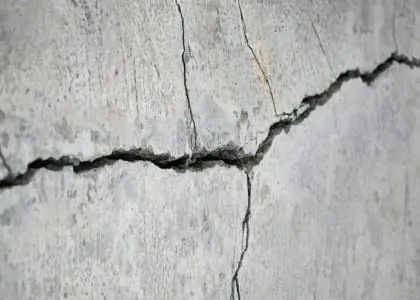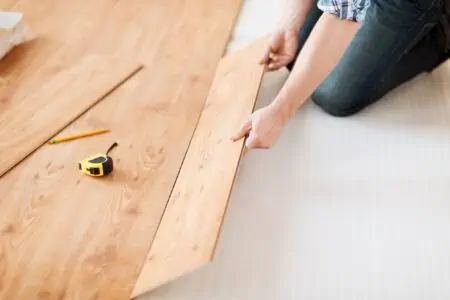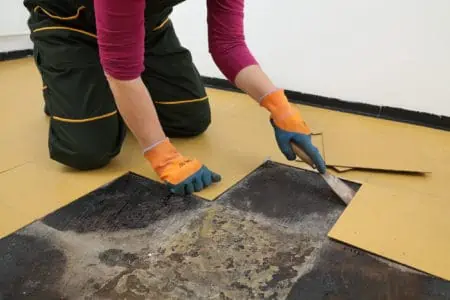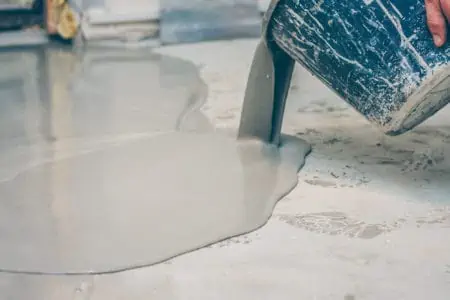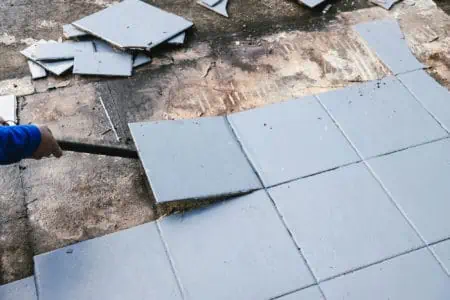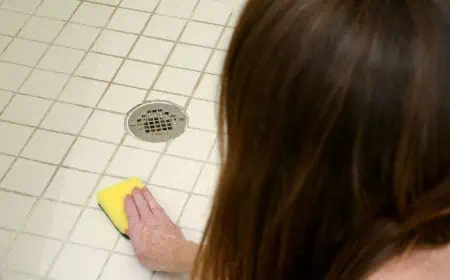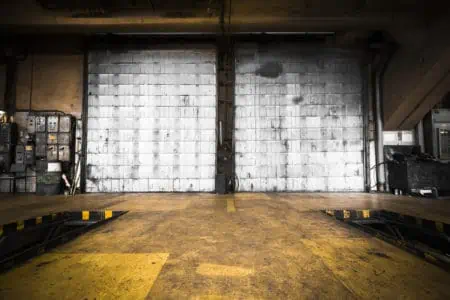Concrete is a super tough material, especially if it is allowed to set correctly. It resists cracking and stays looking good for years. However, if the concrete is not allowed to cure fully, it can crack in extreme weather conditions.
We highlight the best concrete crack fillers, why they are so good, and how they help you keep your concrete patch in tip-top condition.
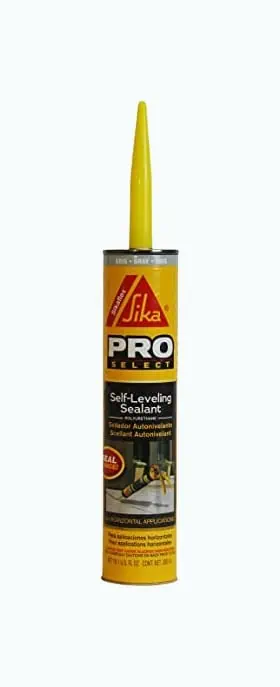
- Weatherproof
- Paintable, so you can blend the gaps
- Layer the filler for gaps up to 15 inches
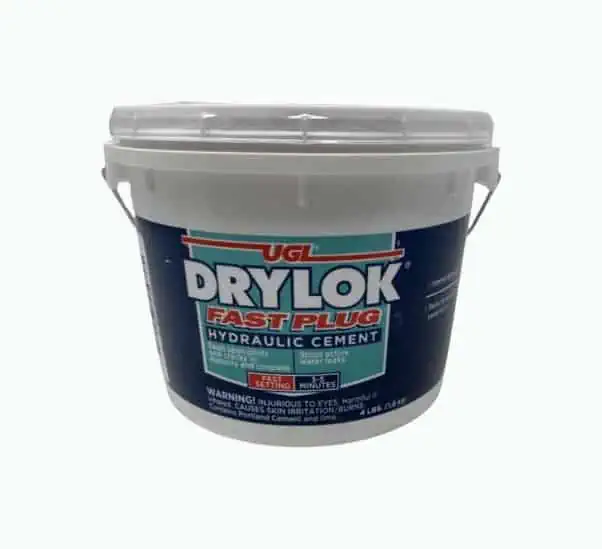
- Withstands up to 3,050 lbs. of pressure
- Sets, even underwater
- Bonds metal to masonry
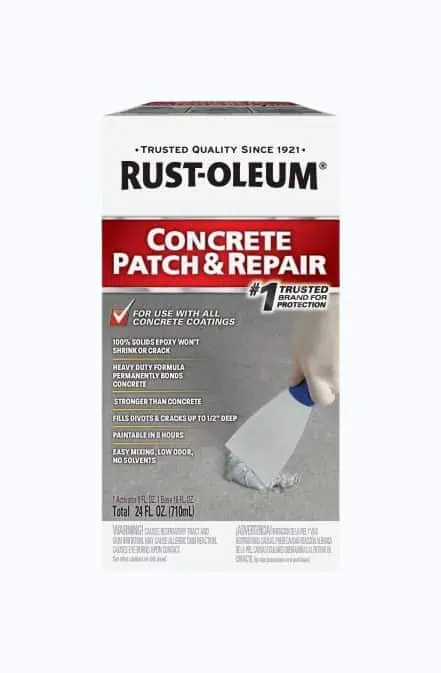
- Sets harder than concrete
- Guaranteed not to shrink or crack
- Indoors and outdoor
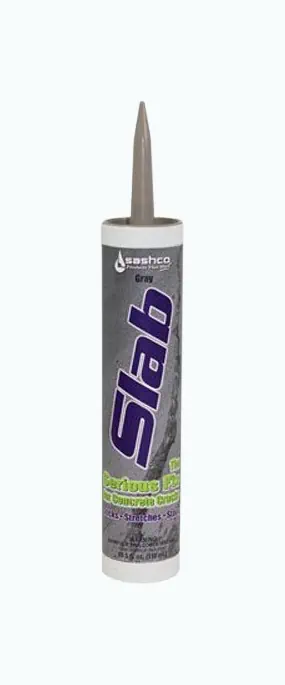
- Sets hard but retains flexibility
- Great for wider cracks up to 3 inches
- Paintable and freeze-to-thaw resilient
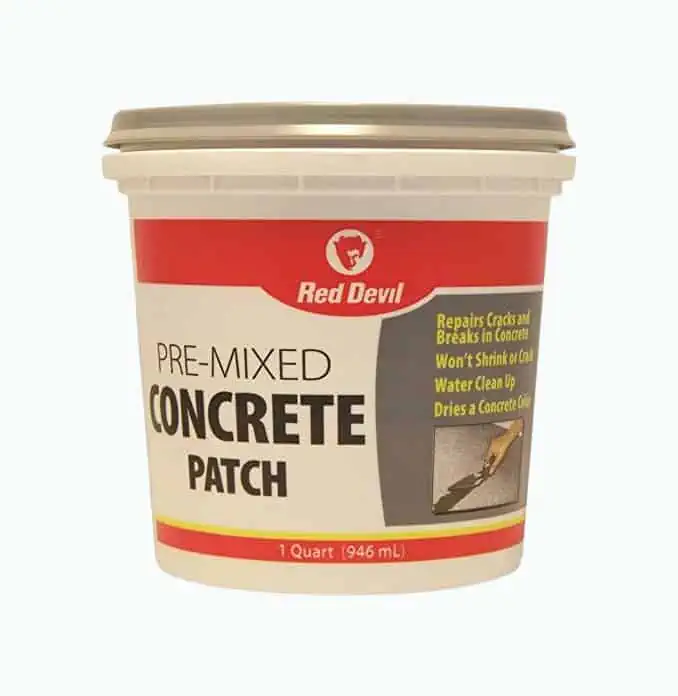
- Pre-mixed for faster and convenient application
- Ideal for walls and floors
- Comes in tubs, multi-packs, squeezy bottles
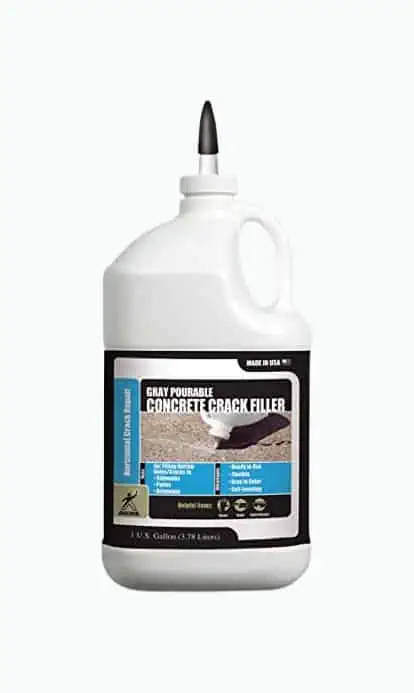
- Ideal for gaps measuring 0.25 inches
- Dries super hard for driveways & heavier traffic
- 30 to 60-minute cure time
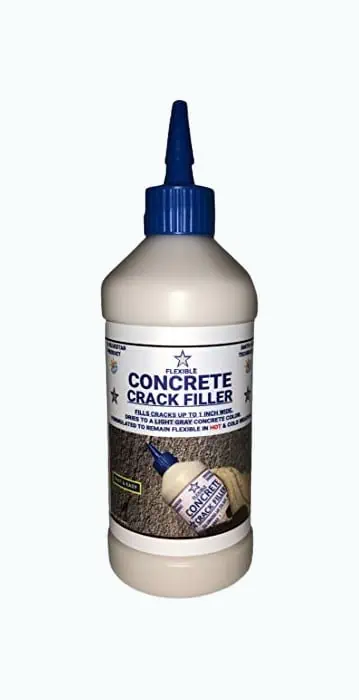
- Easy to pour and apply
- Comes in light and dark gray color
- Fills gaps up to 1-inch wide
Review Methodology: At Sensible Digs, we pride ourselves on delivering a thorough analysis of the best concrete crack fillers. Our team’s hands-on experience and extensive research are used to measure, compare, and rank each product. We evaluate each product from a user’s perspective, diving deep into the performance, effectiveness, and ease of use of each concrete crack filler. We identify key decision-making factors such as drying time, durability, and cost, providing you with a comprehensive evaluation. We provide first-hand evidence, data, and facts about the products, highlighting what sets each one apart from its competitors. Our reviews are based on strict criteria and standards, ensuring you receive the most professional and reliable advice for your concrete repair needs.
The Best Concrete Crack Fillers of 2024
Having analyzed hundreds of concrete crack fillers, rating them for their curing time, best uses, and overall customer satisfaction, here are our top choices.
Sikaflex Self-Leveling Sealant
Best Self-Leveling Concrete Crack Filler
This Sikaflex self-leveling sealant requires zero tooling to level, making it convenient for fast crack repairs that you can set and forget about. Surprisingly, it can bridge gaps up to 1.5 inches in width, thanks to the ability to layer up the sealant.
Once set, it is paintable, sandable, and stainable, so if you are using it for filling gaps in walls, you can match it in and make the gap disappear.
Once it cures, it is flexible and durable, so it withstands whatever you throw at it. It’s also water and weatherproof, so once you fill the gap, you don’t need to keep one eye on the weather in case it rains.
The only downside is it only comes in 10 oz bottles, so while it is cheap buying an individual bottle, the costs may escalate if you have a more significant patch job to tackle.
Pros
- Weatherproof means you can fill the gap even in the rain.
- Paintable, so you can blend the gaps, so they disappear completely.
- Has the ability to layer the filler for gaps up to 1.5 inches.
- Pinpoint nozzle makes it easy to direct the filler.
Cons
- Only comes in 10 oz bottles, restricting your coverage.
- Costs soon rack up when you need multiple bottles.
- Better suited to smaller patch jobs.
Product Specs
| Weight | 14.6 oz |
| Max gap size | 1.5 inches |
| Material | Polyurethane |
| Other features | Paintable, sandable, flexible |
| Curing time | 3 hours |
| Price | $$ |
Our Ratings
User Experience
Drylok 00917 Waterproof Hydraulic Cement
Best Concrete Crack Filler for Pool Deck
This Drylok hydraulic cement is pretty unique because, unlike standard cement that hates moisture, this stuff sets even underwater. The water starts a chemical reaction that causes the concrete to set hard.
It makes it the ideal product for your pool repairs. It anchors metal to masonry, so if you are resetting the pool ladder to the wall, this filler does the job. It also sets in 3 to 5 minutes, which is super-fast.
It performs well by withstanding up to 3,050 pounds of hydrostatic pressure and stops water from flowing, even when under pressure. The only downside with this product is you have to mix it yourself because it comes in powder form. It is also less convenient to apply compared to pinpoint bottles.
However, you do get more coverage, enabling you to repair larger gaps and holes.
Pros
- Withstands up to 3,050 pounds of pressure.
- Sets, even underwater, which is great for pool repairs.
- Sets in double-quick time, so no waiting for it to cure.
- Bonds metal to masonry.
Cons
- Not pre-mixed, so it is less convenient to use.
- Harder to apply than pinpoint bottles.
- Requires tooling to get the surface smooth.
Product Specs
| Weight | 4 pounds |
| Max gap size | 1.5 inches |
| Material | Hydraulic cement |
| Other features | Waterproof, stops water flowing under pressure |
| Curing time | 3 to 5 minutes |
| Price | $ |
Our Ratings
Personal Perspective
Rust-Oleum 301012 Wall Surface Repair Filler
Best Vertical Concrete Crack Filler
This epoxy formula is guaranteed not to shrink or crack and bonds to walls and floors. It fills cracks up to 0.5 inches, so it is ideal for smaller repairs like window and door frames. It mixes to a consistency similar to plaster and cement, so it handles easily when working vertically.
It’s simple to mix, low odor, and solvent-free. Rust-oleum is so confident they claim this 2-part epoxy is harder than concrete and bonds to any cement surface. You can use it indoors and outdoors, so it is ideal for general repairs.
This filler dries in 8 hours, so it does take a little longer to cure, and you do have to mix it yourself, so it is less convenient to apply than other fillers. The other downside is the price. It costs a lot more than the previous products to feature, but you might be paying for the famous Rust-oleum name.
Pros
- Sets harder than concrete, making it industrial strength.
- Guaranteed not to shrink or crack.
- Bonds to any concrete surface making it suitable for indoors and out.
- Ideal for vertical applications thanks to its thick consistency.
Cons
- Not pre-mixed, so it is less convenient to use.
- Requires a putty knife to apply, which takes longer.
- More expensive than other fillers.
- Takes up to 8 hours for the curing process.
Product Specs
| Weight | 2.68 pounds |
| Max gap size | 0.5 inches |
| Material | 2-part epoxy |
| Other features | Non-shrink, non-crack, ideal for vertical walls |
| Curing time | 8 hours |
| Price | $$$ |
Our Ratings
Community Feedback
Sashco 16210 Slab Concrete Crack Filler
Best Large Concrete Crack Filler
Sometimes you get larger cracks and holes in your concrete. You’d think a filler with a pinpoint nozzle would struggle to cope, but this Sashco filler does exactly that. It handles 3-inch spans.
It’s pre-mixed and comes in 10.5 fluid oz bottles, so it is better for small repair patches. It’s easy to use; you get greater control of the filler, and pinpoint nozzle enables you to reach tight spots.
It’s freeze-to-thaw resilient, paintable, and while the company doesn’t state the curing time, some have reported it takes days rather than hours. This filler withstands foot and vehicle traffic, so if you need a crack fixing on your driveway, this material can cope.
In fact, it works on most surfaces, from garage floors and patios to sidewalks and basement floors. It even competes with Rust-Oleum for vertical applications.
Like the Sikaflex, you only get small bottles, so if you have large-scale repairs, you might want to invest in another product. However, for small patches or wide gaps, this flexible filler does the job.
Pros
- Sets hard but retains flexibility for when the concrete moves.
- Fills 3-inch gaps, so great for wider cracks.
- Paintable and freeze-to-thaw resilient.
- Works on almost every concrete surface, even vertical ones.
Cons
- Limited coverage thanks to the 10.5 fluid oz bottles.
- Costs soon rack up when you need a lot of bottles.
- No stated curing time, which means it probably takes longer than most.
Product Specs
| Weight | 10.5 oz |
| Max gap size | 3 inches |
| Material | Acrylic latex |
| Other features | Flexible, ideal for vertical walls, paintable |
| Curing time | Not stated |
| Price | $ |
Our Ratings
First-Hand Impression
Red Devil 0644 Pre-Mixed Concrete Patch Filler
Best Pre-Mixed Concrete Crack Filler
This Red Devil pre-mixed concrete filler is the ideal product to use when you want to save time mixing a solution to carry out repairs. It has a thick consistency, making it perform like plaster or cement, and is applied using a flat blade scraper or putty knife.
This particular pot is only 100 oz, so it is better suited to smaller repairs, but you can buy it in packs of 6 or as a squeezable bottle with a tapered nozzle. It won’t shrink or crack and is paintable and sandable.
It dries a light gray and is perfect for performing repairs around window and door frames and pipework. It takes longer to cure than most products featured so far. Once you’ve filled the hole, you should wait 24 to 48 hours before sanding and painting.
Also, it is not suitable for vehicle traffic, so don’t use it on your driveway.
Pros
- Pre-mixed for faster and convenient application.
- Ideal for walls and floors, so great for general repairs.
- Comes in tubs, multi-packs, and squeezy bottles.
- Paintable and sandable, making it easy to conceal the crack.
Cons
- Takes 48 hours to cure.
- Not suitable for vehicle traffic, so don’t repair your driveway.
Product Specs
| Weight | 100 oz |
| Max gap size | 0.5 inches |
| Material | Ceramic |
| Other features | Ideal for vertical walls, paintable, sandable |
| Curing time | 48 hours |
| Price | $ |
Our Ratings
User Experience
Akona Pourable Gray Concrete Crack Filler
Best Concrete Crack Filler for Driveways
This Akona pourable filler is the ultimate in convenience. It comes in a 1-US gallon container and covers 160 linear feet, with cracks 0.25 inches deep and 0.25 inches wide.
You can use it on your driveway because it can take the weight of car traffic, but it is also useful for filling gaps in garage floors, patios, sidewalks, and slabs. It is not suitable for vertical applications because the consistency is too runny.
When you apply this product, you need to make sure the temperature is right. It air dries, so using it in cooler temperatures delays the curing process. If it’s above 50 degrees Fahrenheit, you should be fine.
The drying times range between 30 and 60 minutes, but if you want it to set really hard, allow 24 hours. This Akona is expensive. It costs multiple times the price of other fillers.
Pros
- Pre-mixed for faster and convenient application.
- Dries super hard for driveways and heavier traffic.
- 30 to 60-minute cure time means it dries really fast.
- Ideal for gaps measuring 0.25 inches wide and deep.
Cons
- Not suitable for vertical applications as it is a pourable solution.
- Cost a lot more than other alternatives.
- Reacts badly to cold weather and rain.
Product Specs
| Weight | 1 US gallon |
| Max gap size | 0.25 inches |
| Material | Not stated |
| Other features | Pourable |
| Curing time | 30 to 60 minutes |
| Price | $$$$ |
Our Ratings
Personal Perspective
Bluestar Flexible Concrete Crack Filler
Best Concrete Crack Filler for Garage Floor
This concrete crack filler is the perfect choice for filling holes and cracks in garage floors. It is pourable, much like the Akona, and when it dries, it retains its flexibility to adapt to the future movement of the crack.
You don’t need to worry about extreme swings in the temperature because it stays flexible no matter what.
It comes in light and darker gray, so you should be able to color-match, and it fills gaps up to 1-inch wide. You don’t need any tools to apply this solution; it has a tapered nozzle that helps to target where it goes.
It is paintable too, so if you have a painted garage floor, you can blend the colors to match. The only downside is it isn’t suitable for vertical applications, and despite coming in a 16 oz bottle, the coverage is pretty meager for the price.
It also has a 24 hour curing time, which isn’t unusual but given you apply it in layers, that’s 24 hours per layer.
Pros
- Easy to pour and apply, making it ideal for fast repairs.
- Comes in light and dark gray to color match the garage floor.
- Fills gaps up to 1-inch wide and sets flexible.
- Retains its flexibility despite extreme swings in the temperature.
Cons
- Not suitable for vertical applications, which limits its uses.
- 24 hour curing time for each layer you apply.
Product Specs
| Weight | 16 oz |
| Max gap size | 1-inch |
| Material | Not stated |
| Other features | Pourable |
| Curing time | 24 hours per layer |
| Price | $$ |
Our Ratings
Community Feedback
| Product | Best | Weight | Max gap size | Material | Other features | Curing time | Price |
|---|---|---|---|---|---|---|---|
| Sikaflex Self-Leveling Sealant | Best Self-Leveling | 14.6 oz | 1.5″ | Polyurethane | Paintable, sandable, flexible | 3 hours | $$ |
| Drylok Waterproof Hydraulic Cement | Best for Pool Decks | 4 lbs | 1.5″ | Hydraulic cement | Waterproof, stops water flowing under pressure | 3 – 5 minutes | $ |
| Rust-Oleum Repair Filler | Best Vertical Filler | 2.68 lbs | 0.5″ | 2-part epoxy | Non-shrink, non-crack, ideal for vertical walls | 8 hours | $$$ |
| Sashco Slab Crack Filler | Best Large Crack Filler | 10.5 oz | 3″ | Acrylic latex | Flexible, ideal for vertical walls, paintable | Not stated | $ |
| Red Devil Pre-Mixed Patch Filler | Best Pre-Mixed | 100 oz | 0.5″ | Ceramic | Ideal for vertical walls, paintable, sandable | 48 hours | $ |
| Akona Pourable Crack Filler | Best for Driveways | 1 US gallon | 0.25″ | Not stated | Pourable | 30 – 60 minutes | $$$$ |
| Bluestar Flexible Crack Filler | Best for Garage Floors | 16 oz | 1-inch | Not stated | Pourable | 24 hours per layer | $$ |
Types of Concrete Crack Filler
There are several varieties of concrete crack filler. Each performs the same task but in different ways.
Crack Sealant
Concrete crack sealant is a great way to perform repairs to your concrete walls, floors, and any other surfaces. Most crack fillers are epoxy or polyurethane, and when they dry, they form a hard, waterproof repair that lasts for years.
Crack sealant is intended for small cracks up to half an inch in depth. You can apply it in layers to build up the surface of the gap.
The only word of caution when using epoxy is it is non-porous, and when it bonds, it traps any moisture inside, so make sure the concrete is completely dry before applying it.
It’s also easy to apply, coming in tubs or liquid tubes with pinpoint nozzles to get into the smallest cracks.
Repair Caulk
Repair caulk generally comes in the same easy-to-use tubes as some epoxy and polyurethane treatments. Caulk is ideal if you notice small or hairline cracks forming because it gets into the tightest spots.
Thanks to its thick, viscous solution, repair caulk is the ideal material to fill cracks around door and window frames, sidings and gutters, and even roof tiles.
Quick-Setting Cement
Quick-setting cement does what it says on the tin. It either comes in pre-mixed tubs, or it comes in bags that you have to mix yourself. The beauty of quick-setting cement is it blends in with your concrete surface better without revealing it is a patch-up job.
It sets in 20 to 40 minutes, but it is advisable not to place heavy objects on it for a couple of hours.
Hydraulic Cement
Hydraulic cement hardens when a chemical reaction with water takes place. It is the ideal repair solution for swimming pools and outside areas because even if it gets wet, it cures. Standard cement has the opposite reaction to moisture.
To apply it, you push it into the crack by hand, and within a few minutes, it hardens, and because of its consistency, you can use it on vertical surfaces.
Patching Compound
Patching compound is better for large and shallow cracks and holes. It is a mixture of ordinary and specialist cement mixed with aggregate and a blend of polymers and admixtures.
When you add water, it forms a putty-like solution, which resists washing out and bonds to wet concrete to create a robust repair that lasts for years. Patching compound bonds so hard that it actually increases the strength of your cracked concrete.
Concrete Resurfacer
Concrete resurfacing involves laying a thin layer of cement mixed with bonding and chemical agents. As you pour it over your existing concrete surface, it hardens as it dries and gets stronger and more durable.
Resurfacer is the ideal product for repairing shallow cracks and large areas of concrete.
How To Choose the Best Concrete Crack Filler
Selecting the best concrete crack filler is a challenge. There are so many variables to consider. Here are the main factors to bear in mind.
